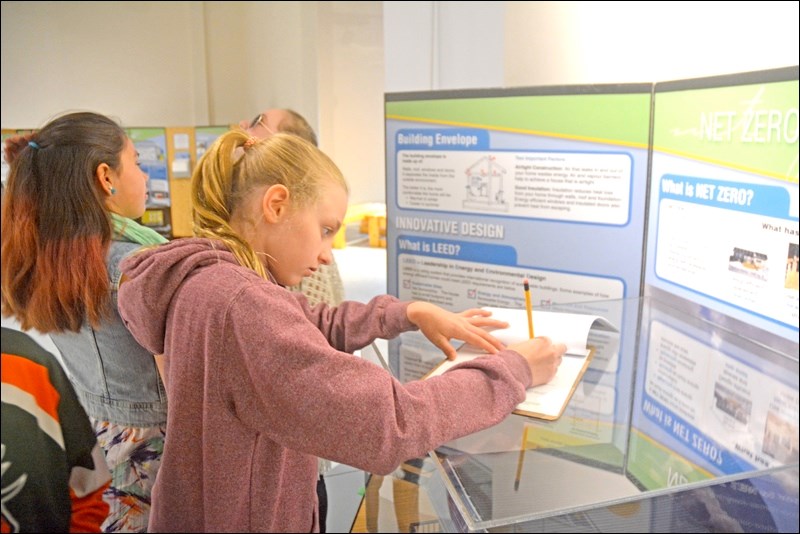The Western Development Museum has new educational displays teachers can bring classes to for an interactive activity.
Located in a room that features historic cars, the displays are part of a program by the Environmental Society called Smarter Science Better Buildings. The program combines interactive displays of various energy savers in homes and other buildings. The energy efficiency of historic buildings on site at the museum is also considered.
Displays look at conserving water and energy, with an emphasis on solar power, along with introducing concepts such as innovative design. Interactive features on the displays include lights, a thermostat, the ability to peek inside a miniature solar powered house and a display showing a toilet’s innards.
The displays are scheduled to last until May 25.
Sarah Blais’ Grade 7 class from École Monseigneur Blaise Morand was at the museum Tuesday morning for a half-day of learning.
The class was divided into groups and made to answer questions whose answers were found on the displays.
“It’s fun learning new stuff, and it’s just interesting,” said student Kale Hudson.
Amir Fadare said he was also having fun.
“We learned multiple different ways to conserve water, and that England uses half the amount of water that we use.”
Most students didn’t have much to say, apart from John Heidel.
“Net zero homes usually have quite a lot of solar panels to power them, and they usually have some eavestroughs and the water then goes into a holding tank,” Heidel said. “Then it gets cleaned and either heated or cooled, then it can be used for showers, baths and washing hands.”
Heidel added costs are a lot cheaper than a regular home, and the costs used to build a net zero home can later on save money.
Despite the lessons learned, Heidel, who thinks he might go into farming, said he might just pay higher bills rather than go solar.



